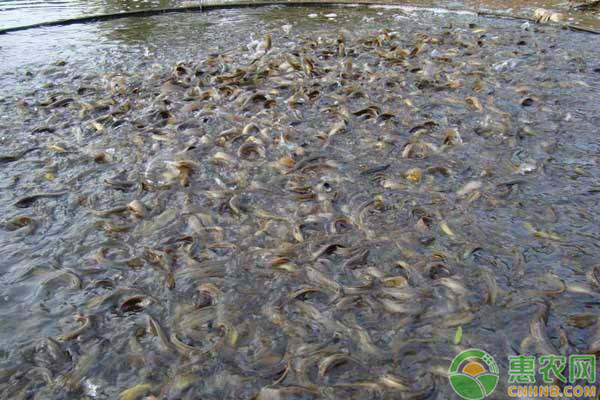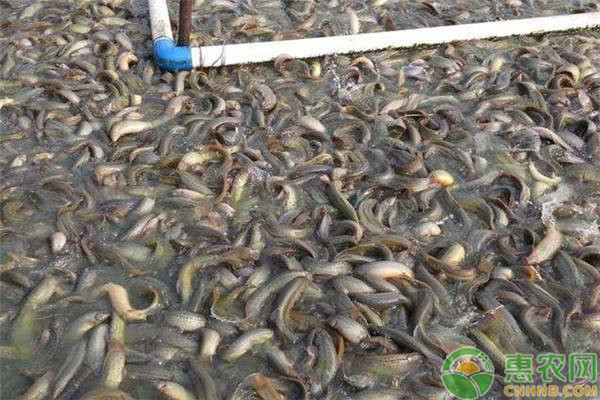In recent years, the benefits of loach farming have been good. In the final analysis, the cost of loach farming is low and the technology is not complicated. In many areas, many new technologies have been developed in the development of loach farming. Below we need to understand the trials of transforming high-yield loach in paddy fields in Tongren City.

First, rice field transformation
1. Rice field selection
The test site is located in Xiaoxiao Town, Jiangkou County. 5 rice fields with large area and concentrated area, with a total area of ​​9 mu. The terrain is flat, the soil is weakly alkaline clay, the soil fertility is high, and the water retention is good. Convenient transportation around the area, convenient for transportation of materials and products. The water source is sufficient, the water quality is fresh and pollution-free, and there are no pollution sources such as livestock and poultry farms and domestic sewage.
2. Tian Hao transformation
Excavate 20 cm wide footing ditch along the field, the depth depends on the degree of softness and hardness of the soil, and it is generally 20 cm when dug into hard soil. The concrete is used to level the footings, and six 390 mm × 190 mm × 190 mm cement hollow brick retaining walls are laid in a single row. A hollow brick column is placed close to the outside of the retaining wall every 5 meters to ensure that the water retaining wall can withstand the pressure. The interior of the retaining wall is decorated with cement mortar and waterproof measures are taken. In the diagonal position, the inlet pipe and the drain pipe are respectively arranged. The inlet pipe is about 20 cm above the water surface, and the drain pipe is connected at the bottom of the pool to the drain pipe, and the water pipe is covered with a PVC pipe.
3. Anti-fighting and anti-harm facilities
A 40-mesh double-layer polyethylene filter is installed in the inlet and outlet. The top and side of the paddy field are covered with a nylon bird net, and the wooden column or cement column is used as a bracket. The bird-proof net is generally 2 meters high, which is convenient for feeding management and fishing.
Second, seedling stocking
Seed selection
The variety is Taiwanese loach, and the seed source is the artificial breeding seedlings of the nearby year. The seedlings are 3 to 4 cm long and require no disease, no injury, good physical fitness, strong swimming, abundant mucus on the surface, and neat specifications.

2. Seed stocking
The seedlinging time is in late April and the density is 60,000/mu. Seedlings are soaked in salt water for about 10 minutes before planting in the pool to kill the pathogenic bacteria. When disinfecting the bath, observe the reaction of the muddy. If there is bad reaction, shorten the bathing time. When the seedlings enter the pool, they should test more than 20 tails of water, and check whether the water in the pool will cause adverse reactions of the seedlings.
Third, aquaculture management
1. Water quality management
Before putting the seedlings, the bait should be carried out first. At this time, the water depth should not be too deep, and the water injection can be about 0.4 meters in advance, and about 300 kilograms of fermented pigs and cow dung per mu, or 25 kilograms of multi-component compound fertilizer. Fill water about 10 cm every 2 to 3 days until the normal depth is reached. This is conducive to the improvement of water temperature, and is convenient for the cultivation of rotifers, copepods, and cladocerans. Keep the water level above 70 cm during the breeding process. Regularly change the pool water. In the early stage, the water can be changed once every half month. In the middle and late period, especially in the summer high temperature season, the water should be changed once every 10 days. The amount of water change is controlled at 15-20 cm each time. Regularly patrol the pond and find that the muddy floating head should be exchanged for new water in time. Water quality control can be carried out by applying microecological preparations, substrate improvers, and splashing lime. Keep the water quality "fat, live, tender, cool", dissolved oxygen above 3 mg / liter, pH 7.5 or so, water color is yellow-green.
2. Feeding management
Feeding the full-price puffed compound feed, the feed amount is 4% to 6% of the weight of the loach. As the temperature and water temperature increase, the amount of muddy activity and food intake gradually increase. It is advisable to increase the feeding amount appropriately to eat in one hour. Feeding adopts the "four-set" principle, timing: feeding three times a day, around 8 am, 12 noon and 6 pm. Quantification: According to the different growth stages of loach, the feeding amount is relatively stable within a certain period of time. Positioning: The muddy swimming ability is relatively weak. In order to reduce the long-distance swimming of the mud, it should be fed evenly around the pond. Qualitative: Ensure that the bait to be fed is not affected by moisture or deterioration.
3. Disease prevention
Adhere to the principle of "combination of prevention and control, prevention, and prevention of gravity". Before watering the bait, thoroughly clear the pond and dry the pond. Select the seed to be uniform in size, strong in activity, and strong in shape. Regularly inspect and reinforce anti-floating facilities and inlet and outlet. Regularly expel and clean up enemy creatures such as snakes, rats, frogs, and birds. There were no major diseases in the mud during the breeding process.
Fourth, harvest listing
After September, the muddy specifications will reach 30 grams/tail. At this time, depending on market conditions and temperature changes, fisheries can be harvested at the right time. Taiwan's loach has the habit of not drilling mud. It can be used for fishing in the cage. The remaining water is dried and concentrated. The test captured a total of 9730 kg of finished loach.
V. Benefit Analysis
Input cost
A total of 9 acres of rice fields were rebuilt. The investment includes the cost of rice paddy renovation of 65,000 yuan, the laying of anti-bird net fee of 9,500 yuan, the seedling cost of 43,200 yuan, the feed cost of 93,400 yuan, the paddy field rent of 6,300 yuan, and the related expenses of water and electricity, personnel wages, disease prevention and control, etc. totaling 19,700 yuan. The total investment of the experiment was 237,100 yuan, and the average acre was 2,6344.4 yuan.
2. Sales revenue
A total of 9730 kg of finished products were harvested, with an average yield of 1081 kg per mu. The loach is calculated based on the average selling price of Tangkou at 26 yuan/kg, the sales income is 252,980 yuan, and the average mu sales income is 28108.9 yuan.
3. Economic benefits
The benefit calculation is to calculate the fixed facilities such as the rice field reconstruction project and the bird-proof net laying. The rice field transformation can be used for 6 to 10 years, the bird-proof net can be used for 3 years, and the second year can save costs. 8278 yuan per mu.

Summary and discussion
1. Loach is a popular small-scale economic fish with good market prospects. In Tongren area, the price of loach is similar to that of squid, but the investment in cultured loach is much smaller, the technical threshold is lower, and it can be more affordable for ordinary farmers. The cultured loach should choose Taiwanese loach, which has a fast growth rate, strong disease resistance and a guaranteed source of seed.
2. The modified rice paddy farming muddy model introduced in this paper is a model that is easier to promote in Tongren Mountain. The people in the mountainous areas are more conservative in their thinking. When transferring land, they are not allowed to destroy the boundaries, soil quality and appearance of rice fields. Compared with the direct digging of Tiancheng, the model transformation cost of this paper is slightly higher, but the cost can be recovered in the same year, and the profit can reach 10,000 yuan per mu in the future, and the economic benefits are considerable.
3. The key to successful aquaculture is to prevent leakage, prevent damage and raise water. When the field is transformed, it is necessary to take measures to prevent leakage. The choice of paddy fields should be kept away from the big river ditch to prevent flood damage. The anti-harm facilities should be fully equipped, regularly patrol the pond, and regularly remove enemy creatures. The rainstorm is especially careful, so be sure to patrol the pond frequently. Ponds can be properly planted with water hyacinth, water cabbage, and water peanuts to create a good water environment for loach growth.
4. Seed input accounts for about 20% of the cost of farming. The technical threshold for the breeding of muddy carp in Taiwan is not high. It is recommended that when large-scale farming is carried out, the seedlings are mainly self-propagating and the breeding cost is reduced.
The above is the whole content of today. The friends who have cultivated muddy at home can actually refer to the experience of muddy farming in other areas to see if they can maximize the benefits of loach farming!
Source: "Scientific Fish Farming"
Author: Tsung soldiers who HE ZHOU Zhang Queyou Qing
Air Hose Reel,Mini Air Hose Reel,Air Compressor Hose Reel,Industrial Air Hose Reel
NINGBO QIKAI ENVIRONMENTAL TECHNOLOGY CO.,LTD , https://www.cxhosereel.com